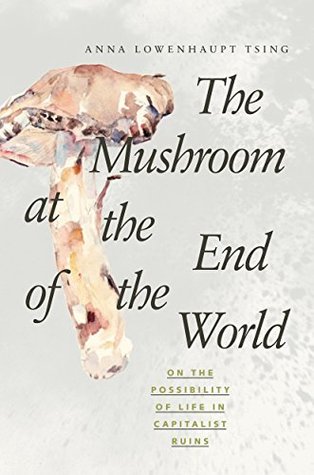More on this book
Community
Kindle Notes & Highlights
Read between
September 1, 2020 - December 15, 2021
EVER SINCE THE ENLIGHTENMENT, WESTERN PHILOSOphers have shown us a Nature that is grand and universal but also passive and mechanical. Nature was a backdrop and resource for the moral intentionality of Man, which could tame and master Nature.
Imagine “first nature” to mean ecological relations (including humans) and “second nature” to refer to capitalist transformations of the environment.
William Cronon’s Nature’s Metropolis.
“third nature,” that is, what manages to live des...
This highlight has been truncated due to consecutive passage length restrictions.
Precarity once seemed the fate of the less fortunate. Now it seems that all our lives are precarious—even when, for the moment, our pockets are lined.
Such sensibilities will be needed for the end of global progress’s easy summer: the autumn aroma
the history of the human concentration of wealth through making both humans and nonhumans into resources for investment.
Alienation obviates living-space entanglement.
Thus, simplification for alienation produces ruins, spaces of abandonment for asset production.
Precarity is the condition of being vulnerable to others. Unpredictable encounters transform us; we are not in control, even of ourselves. Unable to rely on a stable structure of community, we are thrown into shifting assemblages, which remake us as well as our others.
A precarious world is a world without teleology. Indeterminacy, the unplanned nature of time, is frightening, but thinking through precarity makes it evident that indeterminacy also makes life possible.
history without progress is indeterminate and multidirectional, might assemblages show us its possibilities?
This book argues that staying alive—for every species—requires livable collaborations. Collaboration means working across difference, which leads to contamination. Without collaborations, we all die.
Perhaps, like the war survivors themselves, we need to tell and tell until all our stories of death and near-death and gratuitous life are standing with us to face the challenges of the present.
It is in listening to that cacophony of troubled stories that we might encounter our best hopes for precarious survival.
Scalability, in contrast, is the ability of a project to change scales smoothly without any change in project frames.
Thus, too, scalability banishes meaningful diversity, that is, diversity that might change things.
These histories, both human and not human, are never robotic programs but rather condensations in the indeterminate here and now; the past we grasp, as philosopher Walter Benjamin puts it, is a memory “that flashes in a moment of danger.”
enact history, Benjamin writes, as “a tiger’s leap into that which has gone before.”7
the indeterminate experience of encounter, with its tiger’s leap into history. What
Amassing wealth is possible without rationalizing labor and raw materials. Instead, it requires acts of translation across varied social and political spaces, which, borrowing from ecologists’ usage, I call “patches.”
“Salvage accumulation” is the process through which lead firms amass capital without controlling the conditions under which commodities are produced. Salvage is not an ornament on ordinary capitalist processes; it is a feature of how capitalism works.
“Supply chains” are commodity chains that translate value to the benefit of dominant firms; translation between noncapitalist and capitalist value systems is what they
The conversion of indigenous knowledge into capitalist returns is salvage accumulation.
Savage and salvage are often twins: Salvage translates violence and pollution into profit.
Such translation is the central problem of many global supply chains.
In France they have two kinds, freedom and communist. In the U.S. they just have one kind: freedom.
Freedom as they described it is both an axis of commonality and a point from which communally specific agendas divide.
Freedom can be found in war as well as against war.
this practice, militarism is internalized; it infuses the landscape; it inspires strategies of foraging and entrepreneurship.
American precarity—living in ruins—is in this unstructured multiplicity, this uncongealed confusion. No longer a melting pot, we live with unrecognizable others.
Global supply chains ended expectations of progress because they allowed lead corporations to let go of their commitment to controlling labor.
the stratosphere is full of fungal spores;
This is called “di-mon” mating, from the prefixes for “two”—the number of chromosome copies in fungal body cells—and “one”—the number in the germinating spore.19 It’s as if I decided to mate with (not clone) my own arm: how queer.
WAITING to see if mushrooms might emerge is thus an existential problem.


